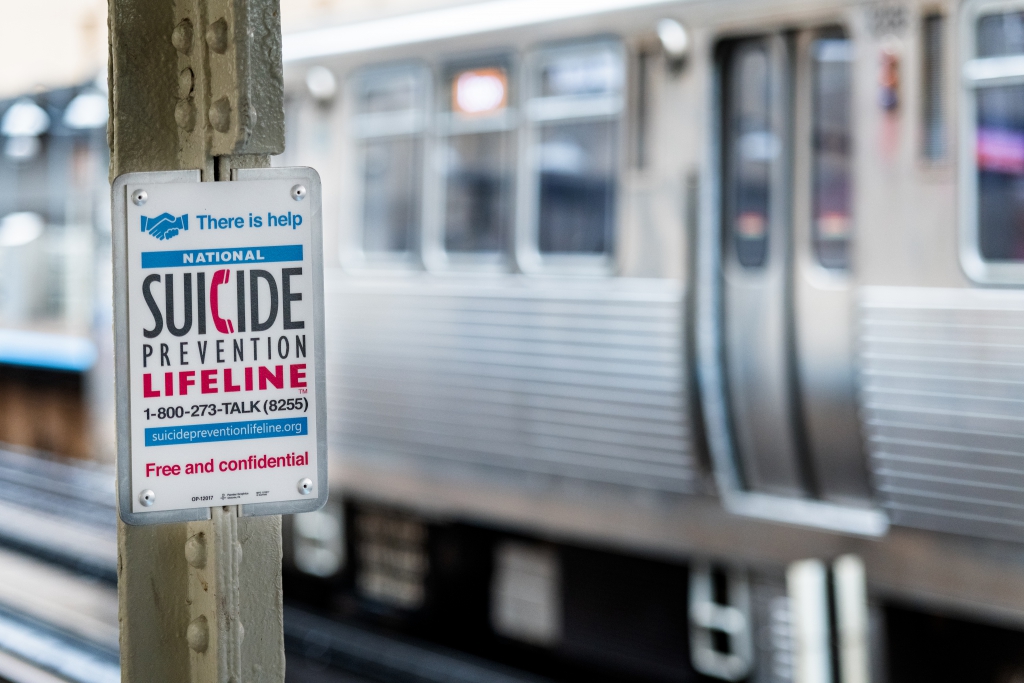“It’s a perfect storm here in Vermont,” says Thomas Delaney, Associate Professor, Department of Pediatrics at Larner College of Medicine, referring to Vermont’s high suicide rate.
The contributing factors, according to Delaney, are many: “Vermont is the second oldest state, we have a high rate of firearm ownership, and a high number of veterans,” he says. “Vermont has higher rates of binge drinking. The state is rural, and there’s greater rural poverty.”
To make meaningful progress toward lowering Vermont’s suicide rate, Delaney believes it’s essential to look at suicide prevention through the lens of public health — or, more specifically, “public mental health.”
Now, with the receipt of a Center for Disease Control and Prevention (CDC) Comprehensive Suicide Prevention grant, Delaney is part of a team tasked with reducing Vermont’s suicide rate by 10% over the next 5 years. As an external evaluator on the grant team, Delaney is evaluating the state’s implementation of diverse reduction strategies.
Confronting a complex problem with tailored interventions
“There are many strategies we’re looking at,” Delaney explains. “In public health you don’t just do one thing, you do six things if you can. It’s about looking at what is effective, why it is effective, or identifying if something just doesn’t work.”
Training primary care physicians to have conversations about firearms storage is one of the strategies the grant team is helping implement. “Physicians don’t really learn how to ask about firearms,” Delaney says. “When they do ask, they may not know what advice to give.This is not surprising, given that most physicians don’t own guns and may not have any experience using or storing firearms. Firearms are involved in approximately 59 percent of suicide deaths in Vermont, so there is real potential for physician training to make a difference.”
Delaney and his colleagues at UVM are developing easily accessible online training to give physicians the information they need to ask important questions related to firearms storage and safety. The key, Delaney says, is keeping it quick. Physicians are often overextended and do not have the time to sit through lengthy training sessions. The initial training takes only 13 minutes and covers effective questioning about firearm access in patients’ homes and counseling on safe firearms storage.
The next step for this initiative, Delaney says, is scaling the training from the initial group of physician participants to statewide accessibility.
Another strategy Delaney and the grant team is exploring relates to expanding telehealth access and providing telehealth providers with suicide prevention training. “The reality is that a lot of mental health providers in the state haven’t actually been trained on suicide prevention, so we’re looking at ways to introduce evidence-based practices in suicide prevention to telehealth providers.”

Importantly, many of the strategies that the grant team is developing are tailored toward specific populations. The strategies that may be most effective for rural males may not be the most effective for the LGBTQ community, for example. “We have this array of strategies. And my role is to work very closely with people across the state to figure out which strategies are working,” Delaney continues. “We have about four years to figure all this out.”
One prevention strategy that Delaney is particularly hopeful about involves drastically expanding the pool of community members who have been trained as suicide prevention “gatekeepers.” The gatekeeper initiative is designed to give a broad base of people and professionals — school and prison workers, mental health agencies, social services, and primary care providers — access to trainings focused on how to have conversations about suicide.
For Delaney, helping more people become comfortable having conversations on a tough subject has the potential to save lives. In gatekeeper training, he says, “you’ll learn how to ask questions about suicidal thoughts or intentions and what to say to someone when they are actually suicidal. And you’ll learn how to help people get help. If you learn these three things, then you are a suicide prevention gatekeeper.”
When asked about the future of suicide prevention in Vermont, Delaney’s response is true to form; as is often the case in public health, reducing the state’s suicide rate will likely depend on a constellation of concurrent interventions. “We need to keep doing the things we’re doing, but also add improved mental health services in school. We need to get upstream in mental health more broadly. Helping people improve their living conditions through economic interventions is a proven strategy. When you can improve someone’s standard of living by $50 a week, it reduces stress in their daily life and the impact can be massive.”




